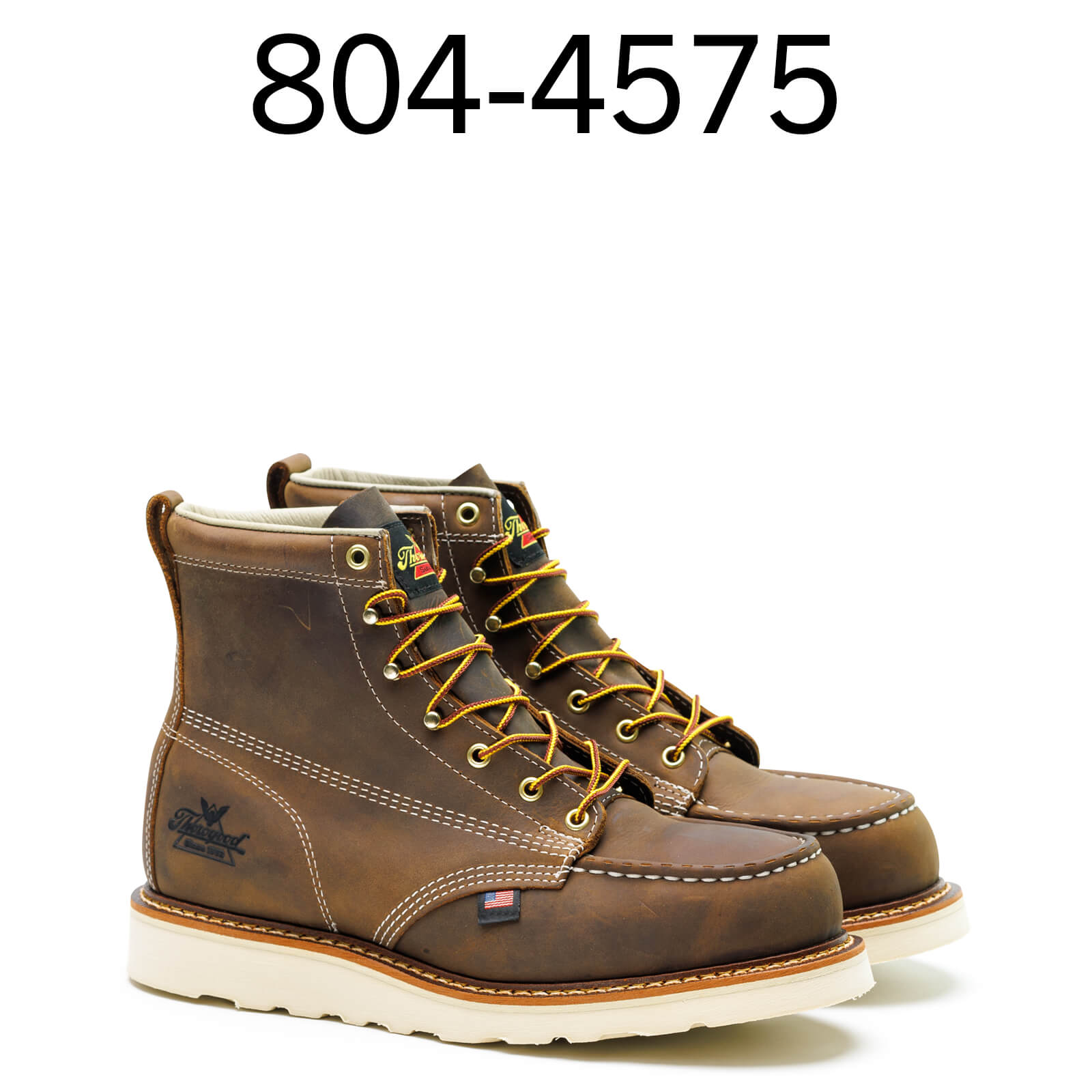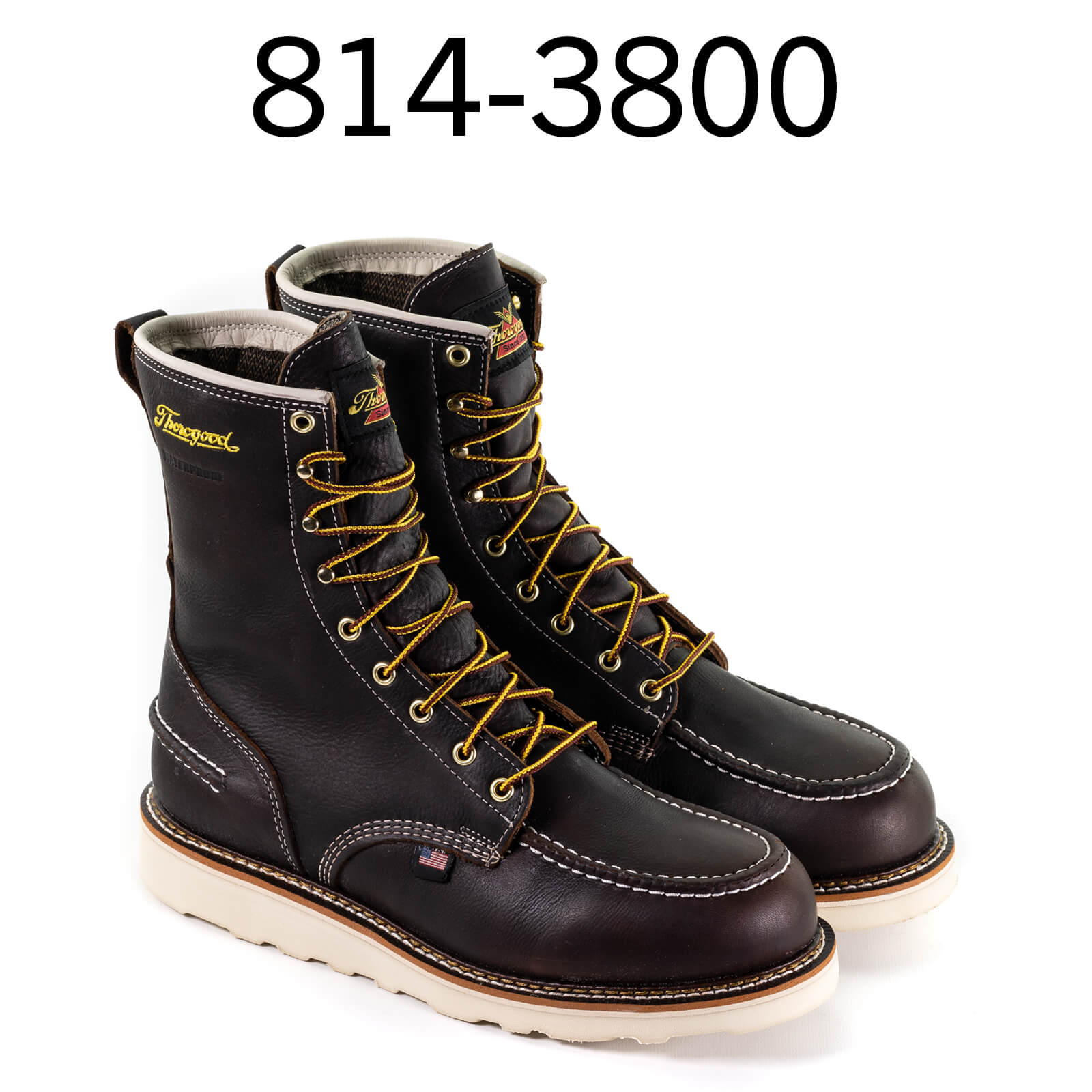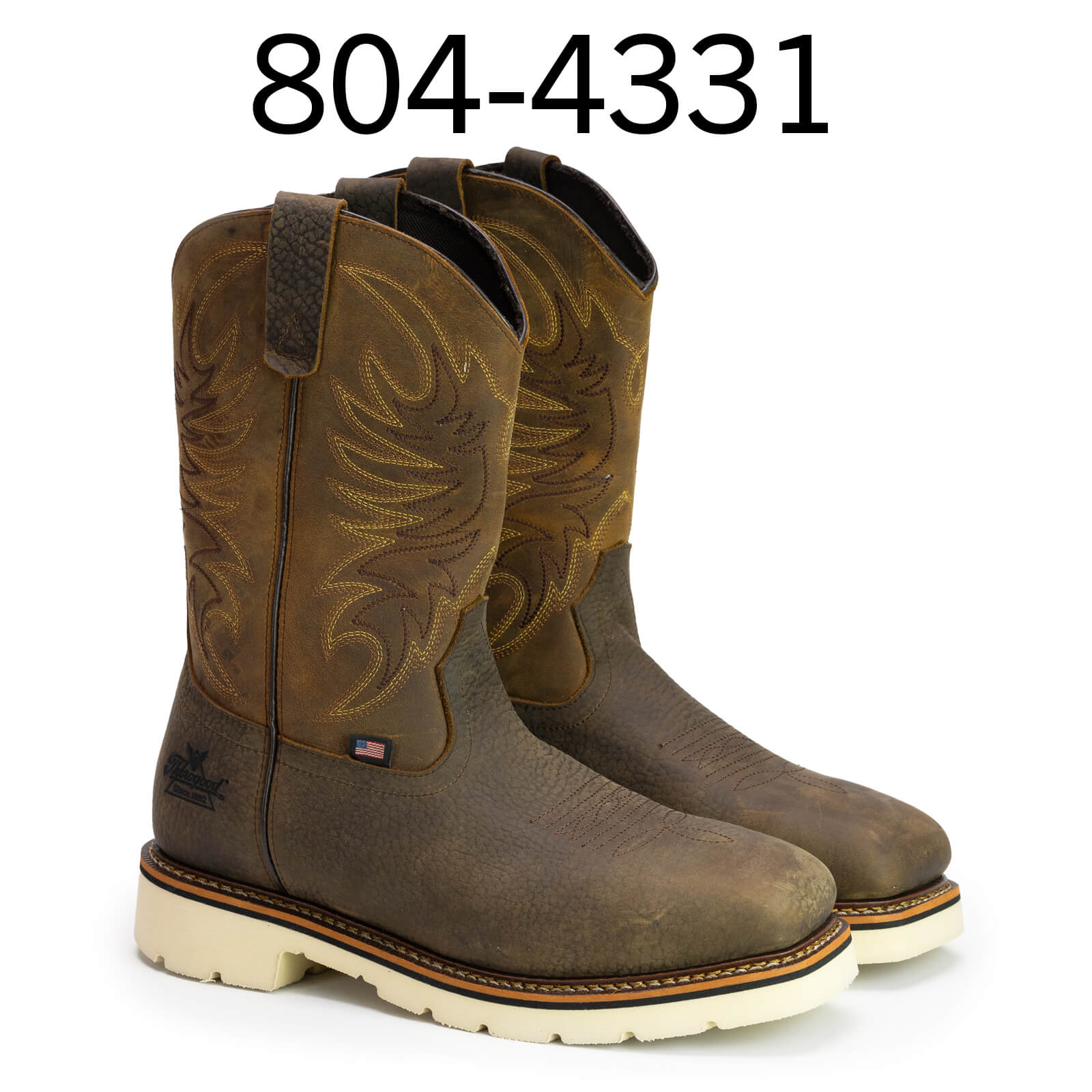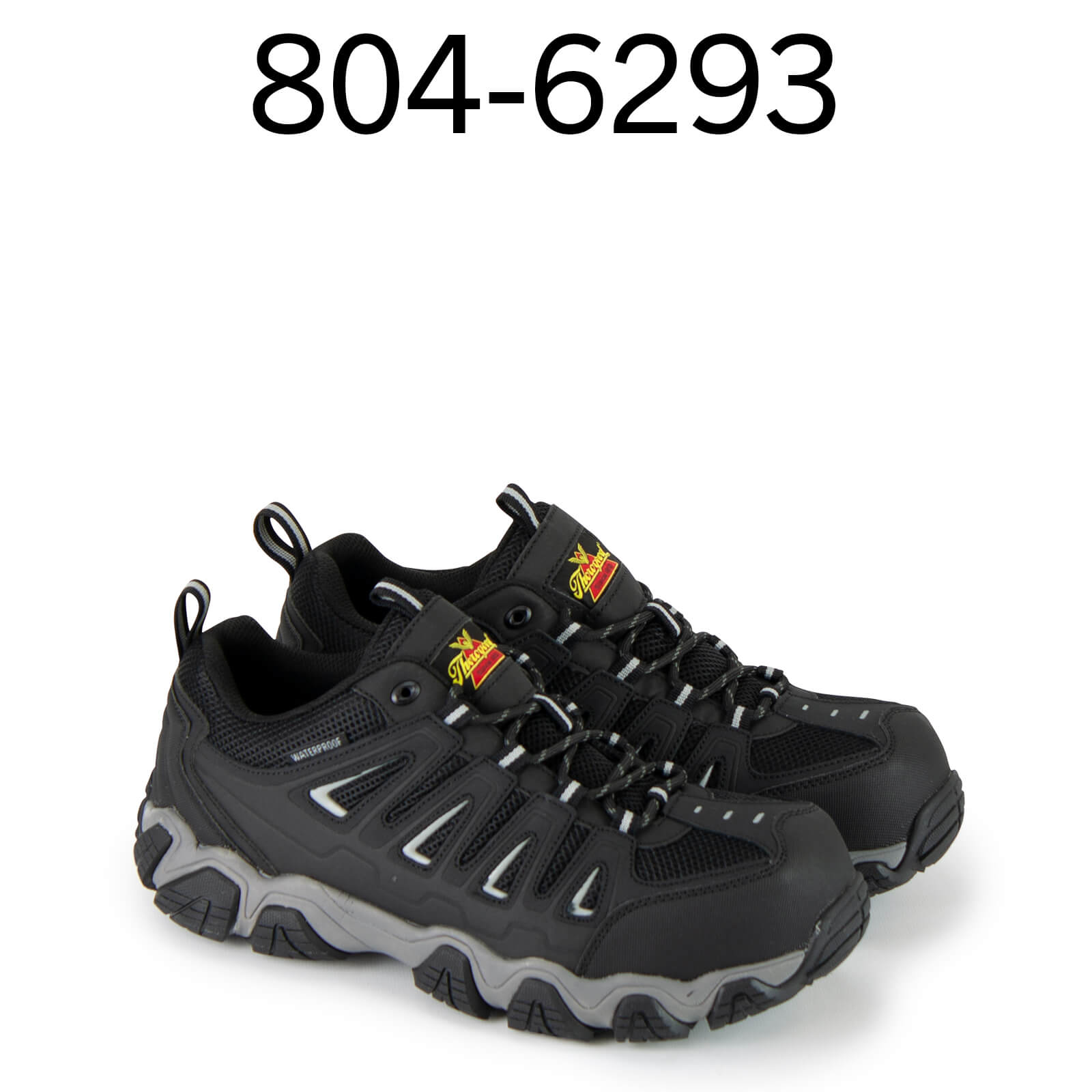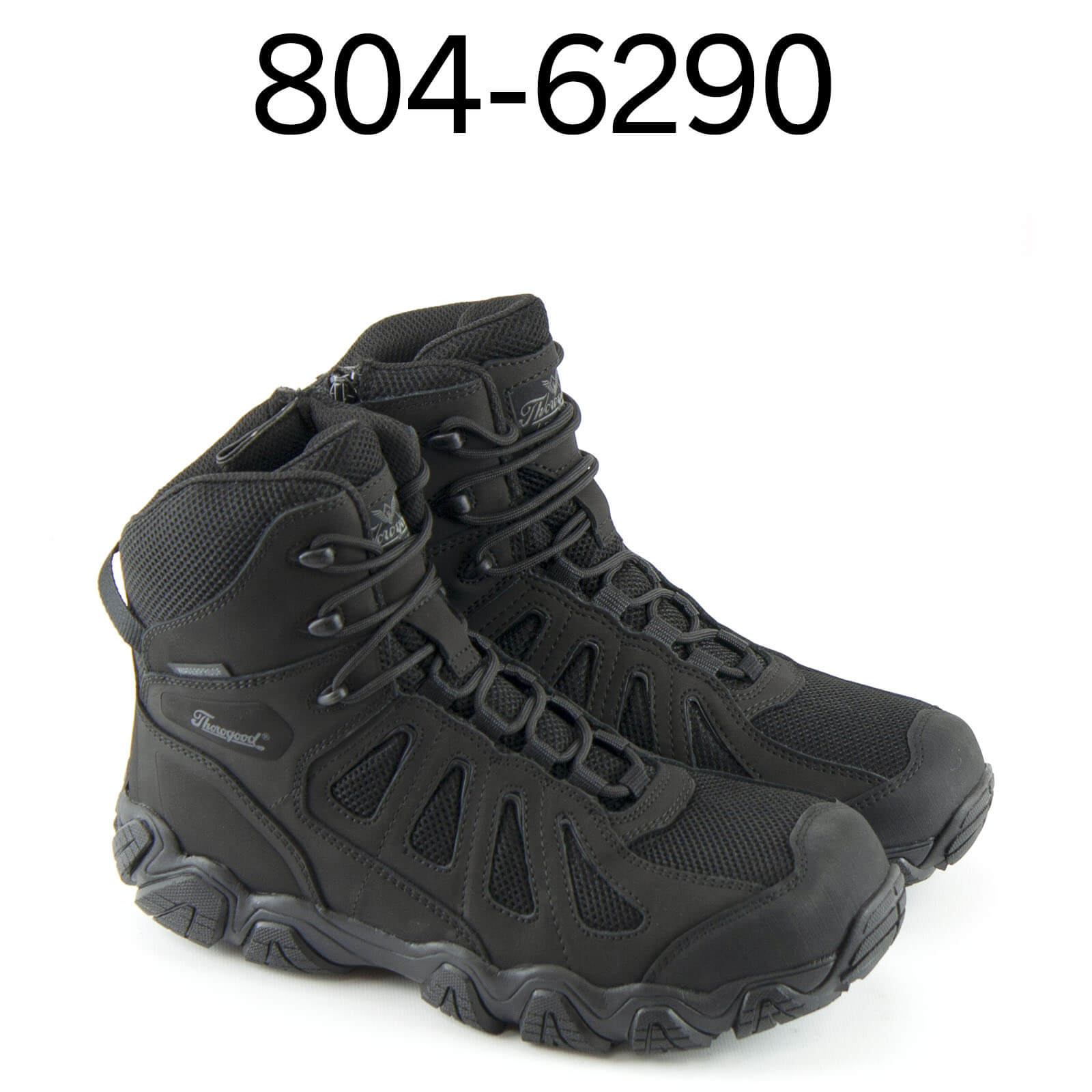With something like midsoles, it can take some digging (not just on the jobsite) to find those perfect “oh, those are the ones.” work boots. To keep it sweet and simple, we’ll be presenting two alternatives you can choose from when it comes to your midsole options. If you love comfy boots, you have midsoles to thank! Midsoles were created to act as a layer between the inner and outer soles of a shoe, designed to absorb shock. However, just like every factor of a work boot - not all midsoles are created equal!
Polyurethane (PU) VS. Ethylene-vinyl acetate (EVA)
Polyurethane (PU) and Ethylene-vinyl acetate (EVA) are about to go head to head in an ultimate showdown to see which material will be the right fit for you and your feet. 3..2..1..fight!
Polyurethane
This first material is known as Polyurethane. We know - we can barely pronounce it too! That’s why we have a handy abbreviation for Polyurethane known as PU (this material doesn’t stink like the nickname implies - don’t worry). Polyurethane is an organic polymer secured together by inserting urethane, which creates the form of the material. Believe it or not, you probably come in contact with PU more than you think! This material is found in your favorite furniture, carpet underlay, and even skateboard wheels!
Ethylene-vinyl acetate
Our second material is Ethylene-vinyl acetate (don’t even try to pronounce this one) and it’s commonly referred to as EVA. To sum it up, EVA is a man-made material that contains tiny bubbles joined together that hold air in place! Just like PU, EVA is used in more than just footwear. It’s probably a part of your weather-resistant car mats, mouth guards, and ice cube trays!
Now that you know a bit about these two materials let’s put em’ to the test to see which one works best for you in terms of footwear.
1. Durability and Longevity
No one wants midsoles that give out on them or don’t stand the test of time. If a long lifespan is important to you, keep reading.
Polyurethane
Let’s take a peek at the specs on PU first. When it comes to durability and longevity, you can’t expect anything better than Polyurethane! This stuff is as tough as you are. It has a world-wide reputation of being resistant to wear and tear over extended periods. The long lasting power of this material makes it perfect for blue collar folks looking to not replace their boots frequently.
Ethylene-vinyl acetate
Although the durability is still good, EVA doesn’t stand the test of time quite like PU does. If you aren’t working in extreme weather, rough terrain, or unpredictable environments, this material can still be a great fit for your midsole! If you do find yourself in a rougher jobsite environment - EVA might not be the best option.
2. Comfort and Cushioning
For most people who still work for a living, comfort is key when it comes to footwear. Let’s see which material helps keep your feet feelin’ good.
Polyurethane
Similar to point one, PU just knows how to stand the test of time! This material offers superior shock absorption, providing excellent support during long hours of use. Perfect for that overtime shift or long week you’ll be working! What really makes Polyurethane stand out is that it maintains cushioning properties even with prolonged wear, ensuring consistent comfort.
Ethylene-vinyl acetate
If you like that “light as a feather” feel, EVA is your best friend. Ethylene-vinyl acetate is exceptionally lightweight with excellent shock absorption, ensuring comfort throughout the day. There’s only one downside: EVA may compress over time, but generally this material will continue to provide a soft and cushioned feel.
3. Weight and Flexibility
A big part of comfort comes from weight, especially if you work a job that requires a lot of movement. Ready to see which midsole will keep you light on your feet? Let’s take a look.
Polyurethane
PU does have that robust support that many manual labor workers enjoy, especially in heavy-duty work environments. However, this material is no match for EVA as far as weight goes. With Polyurethane, you can expect to have a heavier feel to your work boot. PU does provide a balance between stiffness and flexibility, offering stability while allowing natural movement.
Ethylene-vinyl acetate
EVA definitely takes the cake on this one! Ethylene-vinyl acetate is significantly lighter than its PU counterpart, reducing your overall boot weight and minimizing fatigue. If you’re always on the move at work, EVA might be a dream come true for your ankles and legs. Less weight, more balance, extreme flexibility. It’s a win-win-win!
4. Resistance to Harsh Conditions
We know the kind of work you do doesn’t come with easy terrain. Whether it be muddy environments, sharp objects on the ground, chemicals or oil, you need boots that work as hard as you do. Let’s see the comparison!
Polyurethane
PU is the badass of midsoles. Polyurethane is resistant to oil, chemicals, and abrasions, making it suitable for a variety of work environments. This tough material maintains structural integrity even when exposed to challenging conditions. If this sounds like your jobsite, PU might be the best move for your safety and comfort!
Ethylene-vinyl acetate
EVA is a light-weight and flexible material - so it’s not as hard hitting when we’re talking about protecting against harsh conditions. Generally Ethylene-vinyl acetate is less resistant to oil and chemicals compared to PU. Because it’s prone to quicker wear and tear in harsh environments, this midsole type is best suited for lighter-duty work.
5. Cost Considerations
Cost matters, especially when investing in a solid pair of work boots. We’ve listed the price comparison of Polyurethane and Ethylene-vinyl acetate below. Keep scrolling!
Polyurethane
PU is on the higher end as far as cost goes. Typically Polyurethane is higher in cost compared to EVA, reflecting its durable and high performance nature. This work boot is definitely considered a long-term investment due to its extended lifespan and reliability.
Ethylene-vinyl acetate
EVA is lighter on the wallet when it comes to midsoles! Typically Ethylene-vinyl acetate is more budget-friendly than PU, offering a cost-effective option for those with budget constraints. EVA is a good choice for those seeking a balance between performance and affordability!
PU Style Options
EVA Style Options
We hope you’ve gotten a better idea of the type of material you prefer for your midsoles. If you currently work with boots containing PU or EVA, please share your thoughts and experience! No one knows boots better than the hard working people who wear them on the job each and every day. We’re looking forward to seeing which you prefer and why!

